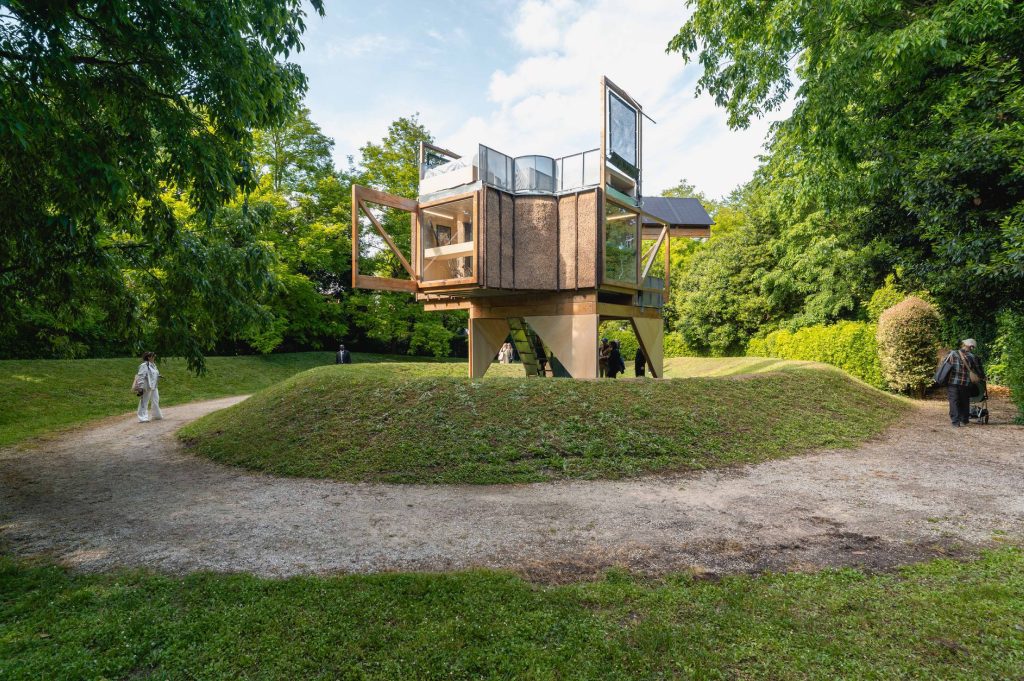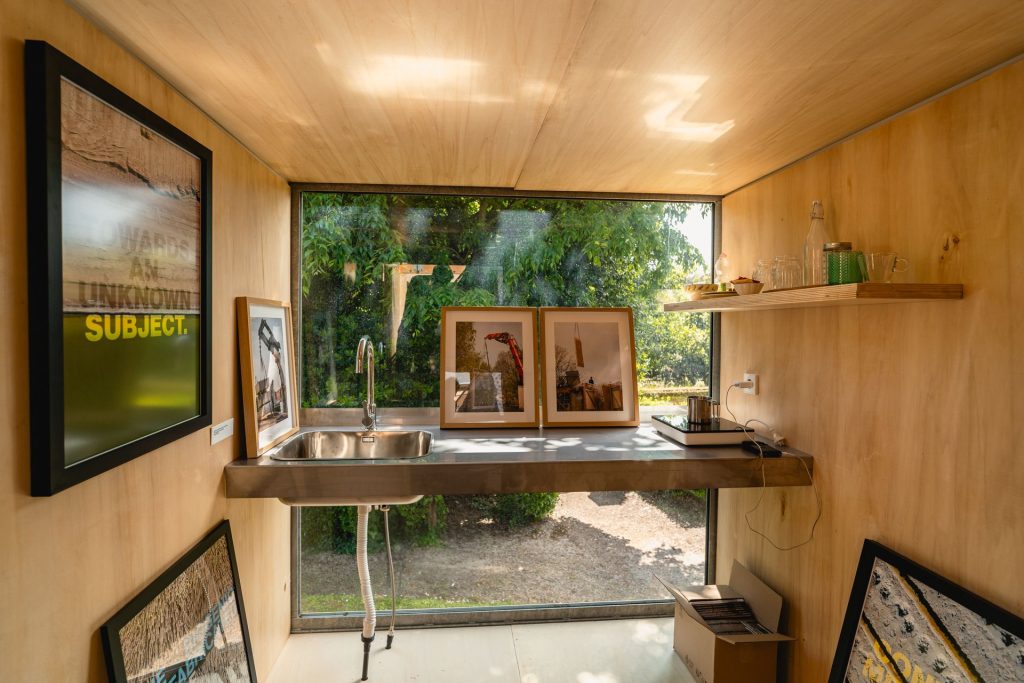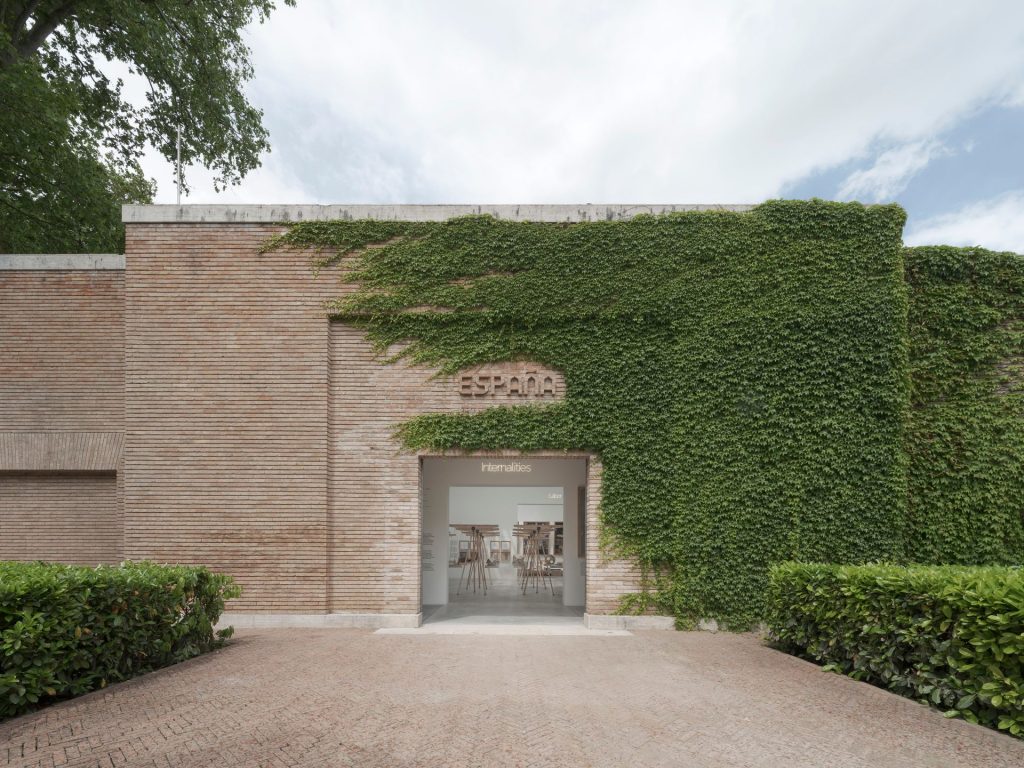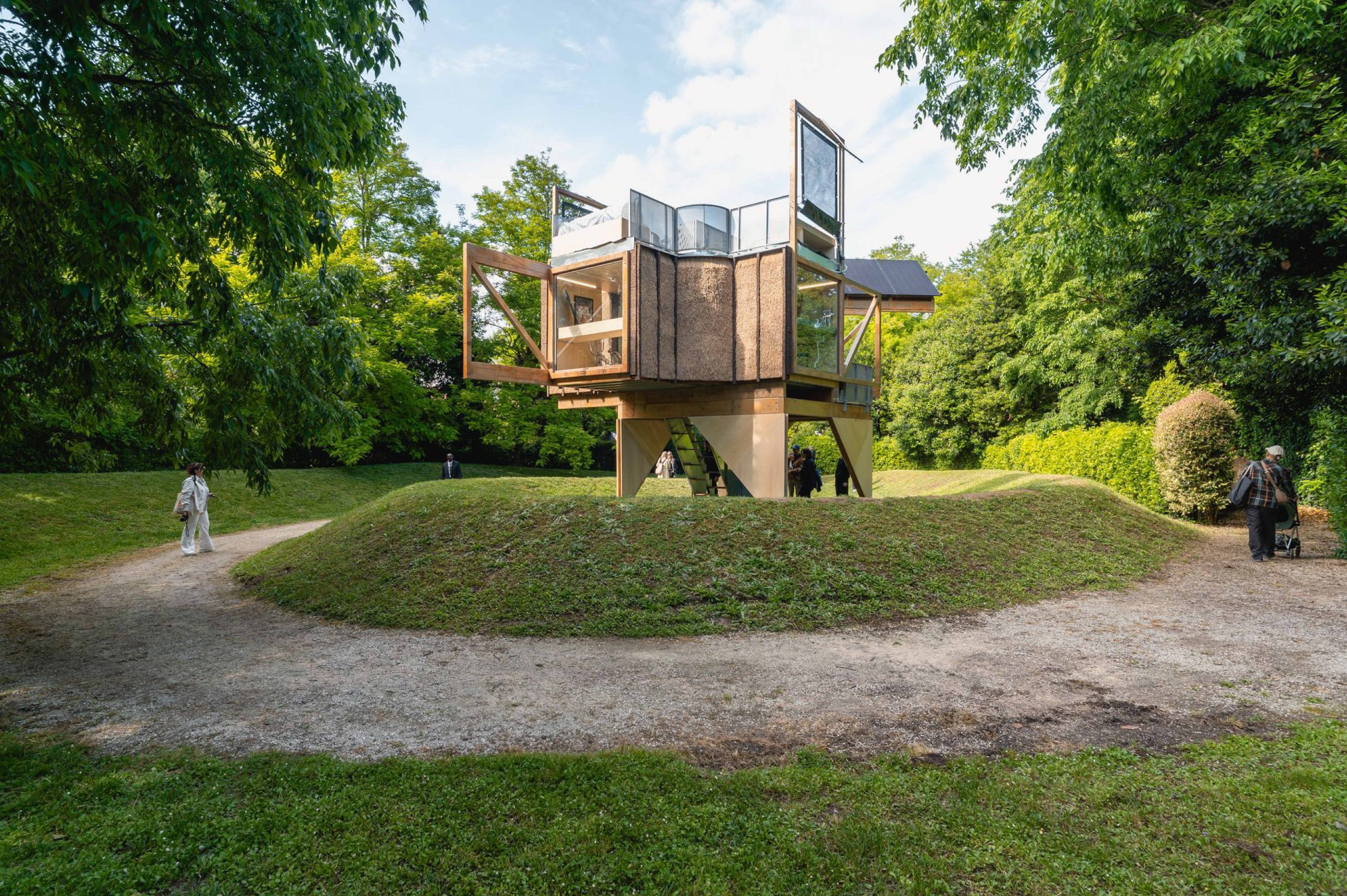The 19th Venice Architecture Biennale, curated by Italian architect and MIT professor Carlo Ratti, opened this year under the provocative theme “Intelligens. Natural. Artificial. Collective”. At the intersection of these forms of intelligence stands architecture, and, quite literally, the hands that bring it to life.
Among the many national pavilions and installations taking center stage in Venice, two remarkable projects stand out for their strong conceptual vision and technical precision. Both were made possible by the expert collaboration of Portuguese-based ArtWorks.

Deserta Ecofolie | Pamela Prado & Pedro Alonso | © Bruno Lança
Deserta Ecofolie: Rethinking Survival Architecture in the Atacama Desert
Designed by Chilean architects Pedro Alonso and Pamela Prado, Deserta Ecofolie is a minimalist housing prototype created for one of the most extreme environments on Earth: the Atacama Desert. With a just 16 square meters footprint, this compact structure is a statement of resilience and innovation.
The project integrates a range of eco-technical systems to sustain human life with minimal environmental impact. These include photovoltaic panels, a domestic wind turbine, a water wall, a dry toilet, and a fog catcher, a key device designed to extract moisture from the desert air. The structure also tests fog-catching efficiency against other devices, such as cooling surfaces for air-condensation, all balanced in terms of energy consumption and water output.
Every element, from bathroom to kitchen, is designed for ultra-low energy and water use. With its compact footprint and technological precision, Deserta Ecofolie is intended as the smallest possible unit of sustainable dwelling, to be deployed in one of the world’s most challenging climates.
The prototype was entirely produced in Portugal, with the support of a technical team that translated conceptual design into physical form through a collaborative, hands-on process.

Deserta Ecofolie | Pamela Prado & Pedro Alonso | © Bruno Lança
Internalities: Spain’s Pavilion and the Architecture of Decarbonization
Spain’s official representation at this year’s Biennale, titled Internalities: Architectures for Territorial Equilibrium, is curated by architects Manuel Bouzas and Roi Salgueiro Barrio. The project explores architectural strategies to rebalance Spain’s territory in the face of climate change and aims squarely at the urgent need for decarbonization.
One of the highlights is a large wooden structure that embodies low-impact construction techniques. Alongside it, a series of objects in wood and metal reflect on material reuse, local economies, and the environmental consequences of architectural production.
Rather than showcasing finished buildings, Internalities offers a toolkit — a set of spatial and material experiments aimed at transforming architecture from within. The physical components were fabricated in collaboration with a Portuguese production team specialized in complex, custom-built structures.

Internationalities | Manuel Bouzas & Roi Salgueiro Barrio | © Bruno Lança
Architecture as Intelligence
Deserta Ecofolie and Internalities reflect the spirit of this year’s Biennale theme, not only through technological innovation but also through a deep awareness of context, climate, and cultural responsibility.
Whether addressing the micro scale of inhabiting a desert or the macro scale of national infrastructure, these projects share a common ambition: to make architecture brighter, lighter, and more attuned to the world it inhabits.
